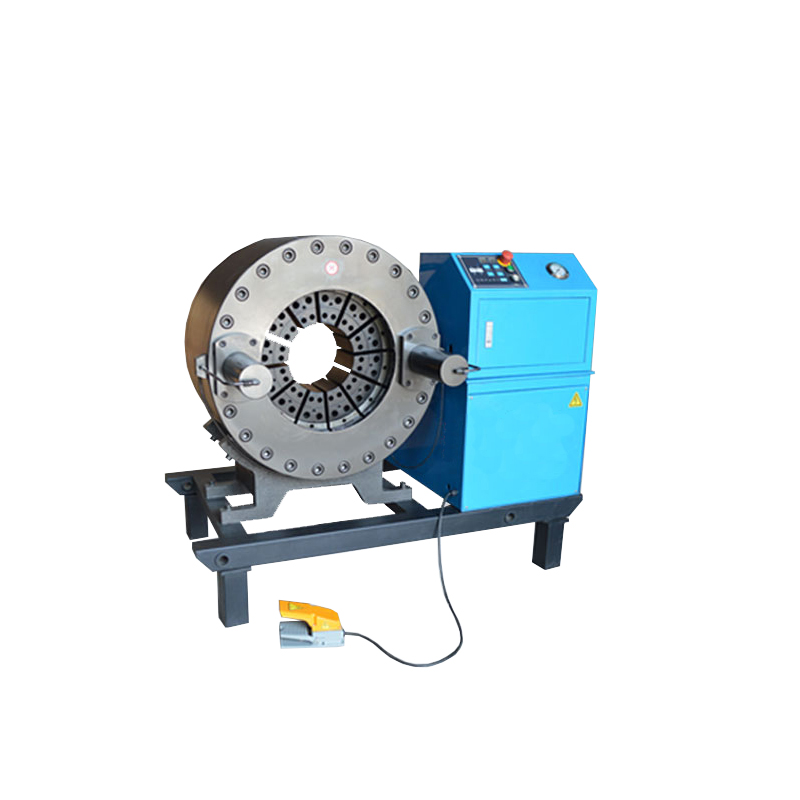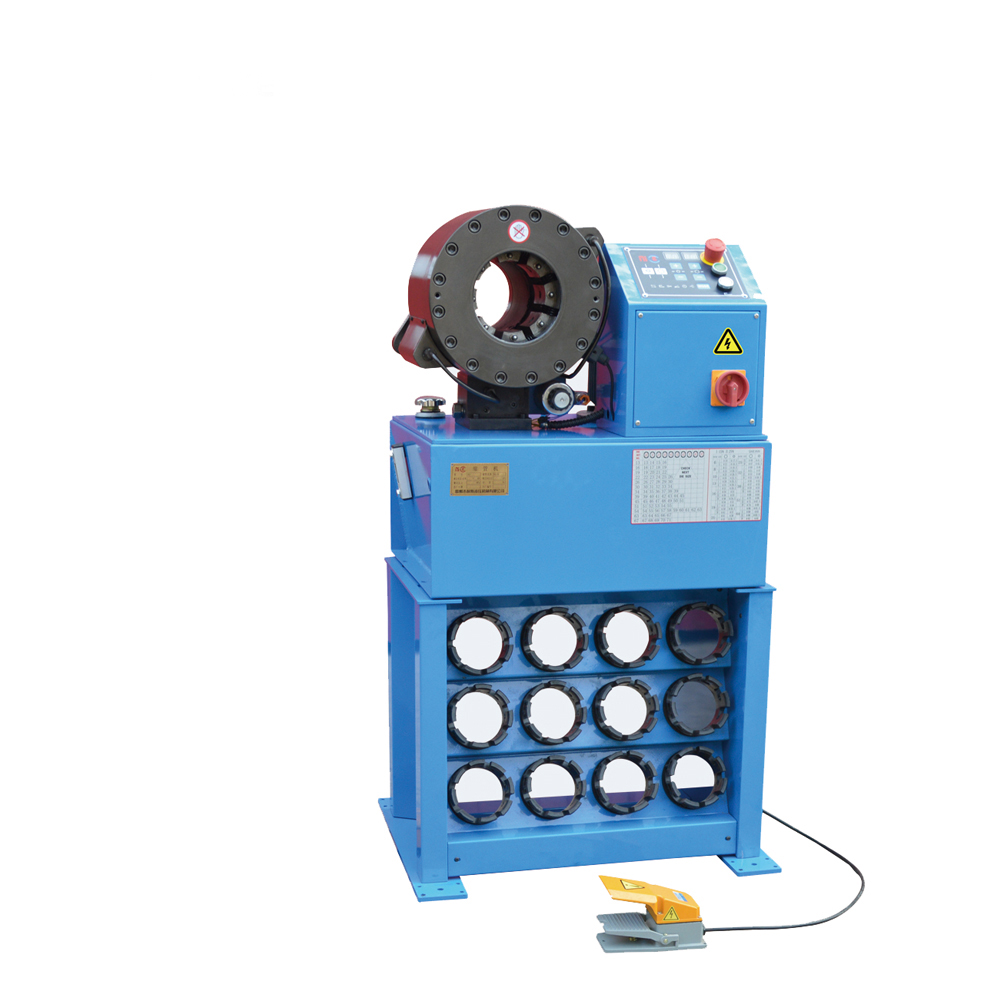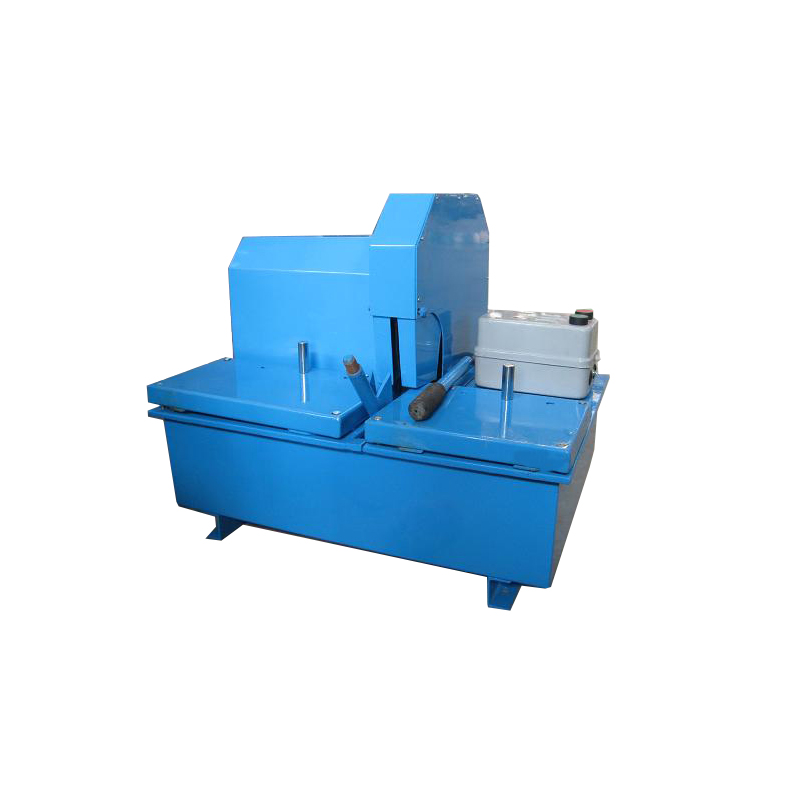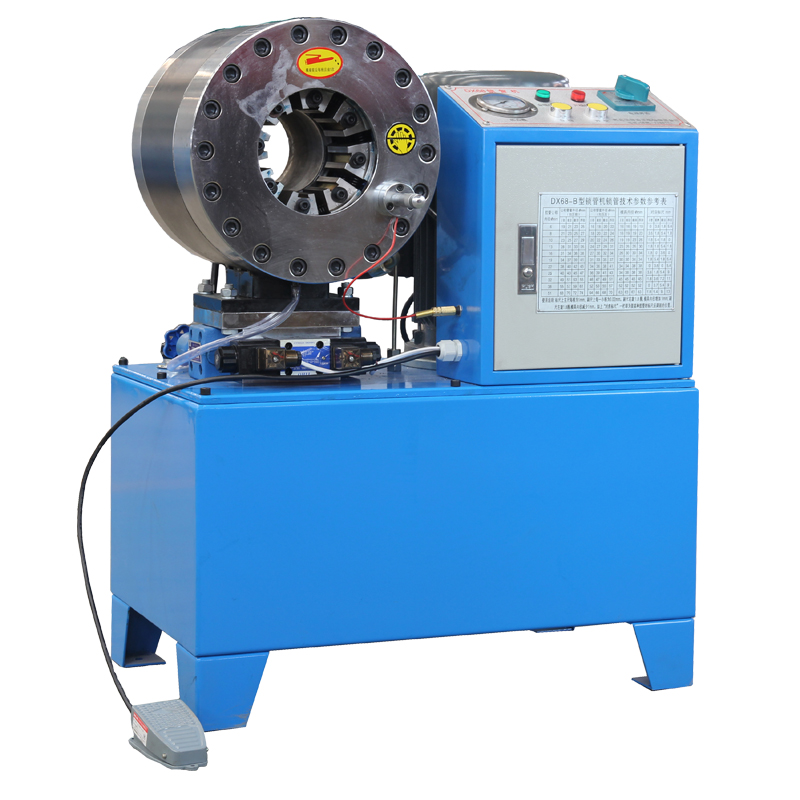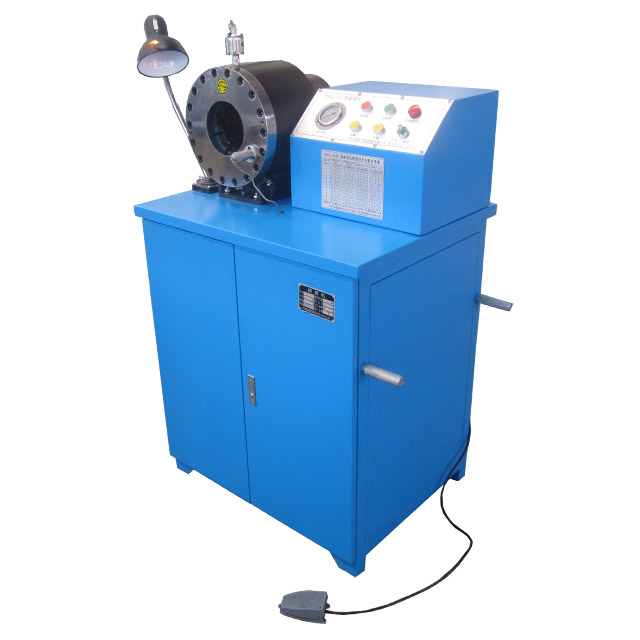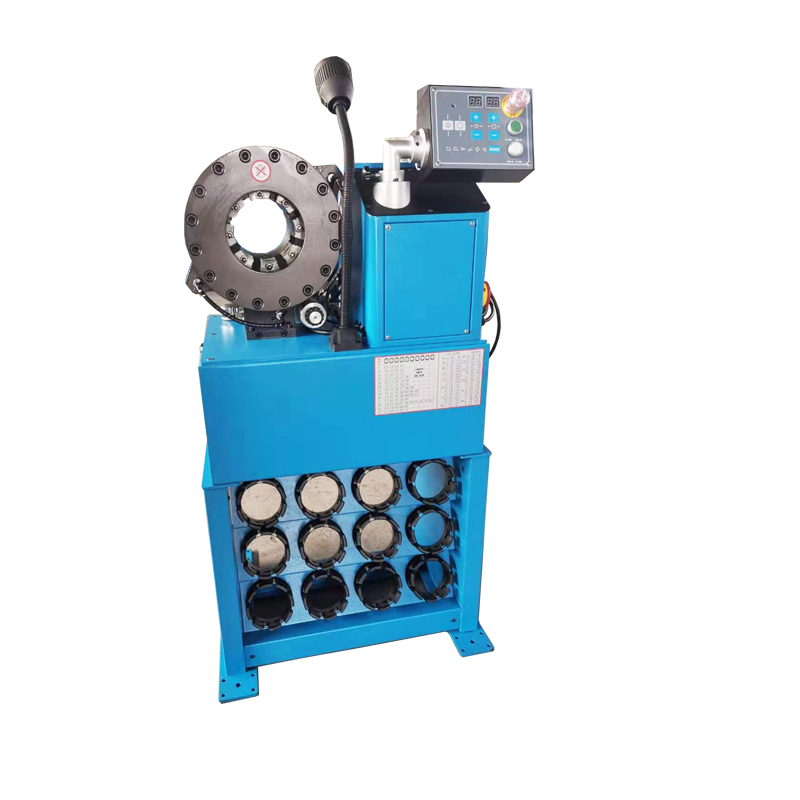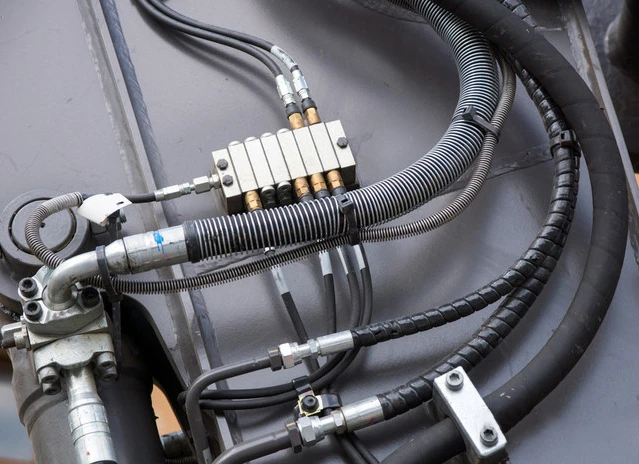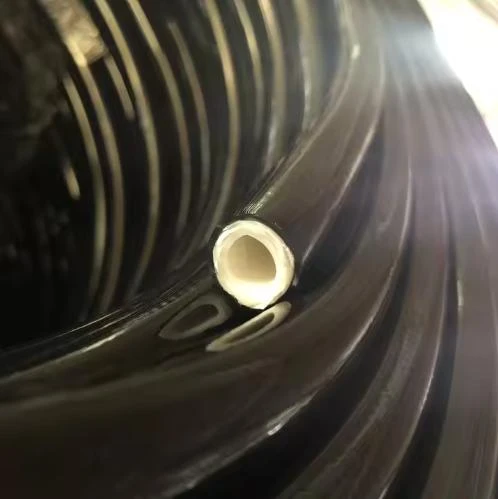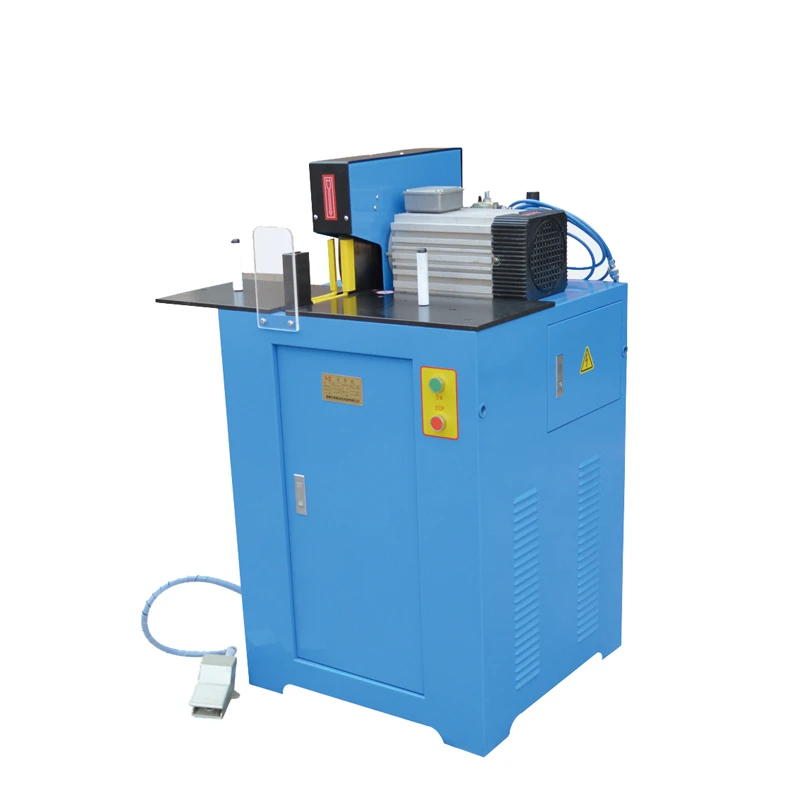Mesin Crimping Selang
A hose crimping machine is a vital piece of equipment used in the hose assembly process to attach fittings securely to the ends of hoses. The primary function of the hose crimping machine is to compress or "crimp" a metal or plastic fitting onto the hose, creating a permanent, leak-proof connection. The crimping process is essential for hydraulic, pneumatic, and industrial hoses, as it ensures the hose and fitting are securely bonded to withstand high pressures and harsh operating conditions.
There are different types of hose machinery. For example, a portable hose crimper offers the convenience of being able to move around and perform crimping tasks in various locations. On the other hand, a manual hose crimper requires human operation and can be useful in some situations where a more hands-on approach is needed or for smaller-scale operations.
The hose crimper machine works by using a set of crimping dies, which apply controlled pressure to the fitting, causing it to tightly grip the hose, thus forming a seal. The hydraulic hose crimping tool can handle various hose materials, including rubber, thermoplastic, and braided hoses, and can be configured to work with different fitting types and sizes. Typically, the hose crimping machine is equipped with adjustable controls for regulating the crimping force, cycle time, and die size, enabling it to handle a wide range of hose dimensions and materials. Some advanced models of the hose crimper come with computerized settings that ensure precision, providing the ability to store and recall crimping parameters for different hose assemblies.
The process of using a hose crimping machine is automated in most cases, making it faster, more consistent, and more accurate compared to manual crimping methods like those of a manual hose crimper. The hose crimping machine also ensures that the crimping process is done in a uniform manner, reducing the risk of under-crimping or over-crimping, both of which can lead to hose failures or leaks. In essence, a hose crimping machine enhances the efficiency and quality of hose assembly by providing reliable, repeatable results, reducing human error, and ensuring a strong, secure connection between the hose and its fitting.
What Are the Different Types of Hose Crimping Machines Available, And How Do They Differ?
There are several different types of hose crimping machines, each designed to meet specific needs in hose assembly, based on factors such as hose size, fitting type, and production volume. The most common types are manual, semi-automatic, and fully automatic hose crimping machines, each offering different levels of control, speed, and automation.
Manual hose crimpers require the operator to manually load the hose and fitting into the crimping tool, such as a hydraulic hose crimping tool, or an air hose crimper, and apply pressure, making them ideal for low-volume or custom hose assembly operations where flexibility and hands-on control are needed. These hose crimpers are typically less expensive and simpler to operate but require more labor and attention during the crimping process.
A portable hose crimper is a type of manual hose crimper that offers the added advantage of mobility, allowing operators to perform crimping tasks in various locations.
Semi-automatic crimping machines offer a balance between manual and automatic systems. These hose crimping machines can perform some steps of the process automatically, such as the crimping cycle and die selection, while the operator still needs to load the hose and fitting. This type of hose crimper is often used in mid-range production environments where higher output is needed but complete automation is not required.
Fully automatic hose crimping machines are designed for high-volume, fast-paced production environments. These hose crimpers automatically load the hose, select the correct die, and perform the crimping process, making them ideal for large-scale manufacturing operations. The operator only needs to monitor the system and ensure that the hose and fitting are correctly aligned. Fully automatic hose crimping machines offer the highest level of efficiency, precision, and consistency, with the ability to handle a wide variety of hose sizes and types.
The differences between these hose crimping machines mainly lie in the level of automation, speed, and versatility, with more advanced models offering greater flexibility in terms of the hose size range, fitting compatibility, and crimping accuracy. Each type of hose crimper offers distinct advantages depending on the specific requirements of the production process.
What Factors Should Be Considered When Choosing a Hose Crimping Machine?
When selecting a hose crimping machine, several factors must be taken into consideration to ensure it meets the needs of the manufacturing process. The first factor to consider is the size range of the hoses the machine can handle. Hose crimping machines are designed to work with specific hose diameters, and choosing a machine with the correct capacity is critical for ensuring that it can process the hoses required for your application. Some machines are designed to handle small-bore hoses, while others are capable of crimping larger industrial hoses. Another important consideration is the type of fittings the machine is compatible with. Hose crimping machines come with different die sets that are designed to crimp specific types of fittings, such as hydraulic, pneumatic, or industrial fittings. It is essential to choose a machine with the right dies for the fittings used in your production. The crimping force is another key factor. Different hoses and fittings require different levels of crimping force to ensure a secure, leak-proof connection. It is important to select a machine with an adjustable crimping force range to accommodate different materials and hose sizes. Additionally, the speed and automation level of the machine are important factors to consider, especially if you are working in a high-volume production environment. Manual machines may be sufficient for small-scale or custom jobs, but fully automatic machines are better suited for large-scale, high-speed production where efficiency is a priority. Ease of use is another factor to consider, as some machines feature digital controls, touchscreens, or programmable settings that can simplify operation and improve accuracy. Finally, reliability and maintenance requirements should be evaluated. A machine that is easy to maintain and has a long lifespan will ensure consistent performance over time, reducing downtime and maintenance costs. By carefully considering these factors, manufacturers can select a hose crimping machine that optimizes productivity, reduces errors, and ensures high-quality hose assemblies.
Decoding the Pressure-Mold Adaptation Logic in Hydraulic Hose Crimper Operations
In industrial fluid transmission, the reliability of hydraulic hose connections depends on the precise coordination between hydraulic hose machine pressure and mold configurations. As a leading hose crimping machine manufacturer, SINOPULSE focuses on mastering this adaptation logic for leak-free, high-performance hose assemblies.
Pressure is the linchpin in hydraulic hose fitting crimper operations, dictating the force needed to bond hose fittings securely. SINOPULSE machines offer an adjustable pressure range from 50 to 500 tons, tailored to various hose sizes, materials, and fitting types. For example, when dealing with a 2-inch diameter steel-wire reinforced hose for heavy machinery, a higher pressure setting is required. In contrast, a portable hydraulic crimper handling a ¼-inch thermoplastic hose for light-duty applications operates at a lower pressure. Our real-time pressure monitoring system continuously analyzes the force applied, preventing under-crimping that could lead to leaks or over-crimping that might damage the hose structure, ensuring optimal results every time.
Molds are equally vital to the crimping process. SINOPULSE designs molds with meticulous geometric precision, conforming to industry standards like SAE J1518 and ISO 8434. Crafted from durable alloy or carbide-coated steel, these molds can withstand immense pressure without deforming, maintaining consistent crimp quality over thousands of cycles. The tapered edges of our molds facilitate smooth fitting insertion, while the quick-interchangeable designs, especially in our portable hydraulic crimper models, balance portability with precision, making them ideal for on-site repairs and maintenance.
SINOPULSE ensures seamless synergy between pressure and molds through advanced features. First, our Data-Driven Calibration system comes pre-loaded with a comprehensive database of crimping parameters for common hose-fitting combinations. When a new job is inputted, the machine automatically suggests the optimal pressure and mold pairing, reducing operator errors and significantly cutting down setup time, a boon for high-volume manufacturing environments.
Second, the Adaptive Feedback mechanism uses sensors to measure actual pressure distribution during crimping and compares it to the ideal profile. Any discrepancies due to mold wear, temperature changes, or material variance trigger immediate pressure adjustments, ensuring the crimp meets strict dimensional and mechanical standards, such as pull-out strength and burst pressure requirements.
Finally, our Modular Design philosophy allows a single hydraulic hose crimper to adapt to diverse applications. By simply swapping molds and recalibrating pressure settings, the same machine can handle low-pressure automotive cooling systems as well as high-pressure industrial hydraulics, providing unparalleled versatility.
Our commitment to integrating pressure-mold adaptation defines SINOPULSE as an industry leader. Whether you're using a portable hydraulic crimper for on-the-go repairs or a high-pressure hose crimper for industrial assembly lines, our machines ensure precision and reliability in every crimp, transforming technical complexity into top-notch performance.
Strategic Selection of Hose Crimper Models for Diverse Pipe Diameters
In hydraulic system assembly, matching the right hose crimping machine to the pipe diameters is critical for ensuring leak-proof connections and operational reliability. As a leading hose crimping machine manufacturer, SINOPULSE specializes in engineering solutions that align crimping technology with specific diameter requirements, from ¼-inch thermoplastic hoses to 4-inch industrial hydraulic lines. Here’s a strategic framework for selecting the ideal hydraulic hose crimper for diverse applications.
Diameter Range: The Core Selection Criterion
Hose diameters dictate the fundamental specifications of a crimping machine. SINOPULSE offers tailored solutions:
Small-Bore Hoses (≤ 1 inch): For automotive fuel lines, pneumatic tubes, or small hydraulic hoses, the portable hydraulic crimper series excels. Models like our compact design ensure mobility while delivering precise pressure (50–150 tons) for ¼-inch to 1-inch diameters. Their quick-change molds adapt to rubber, thermoplastic, and braided materials, making them ideal for on-site repairs or low-volume workshops.
Medium-Bore Hoses (1–2 inches): Industrial applications such as construction equipment or manufacturing lines require machines like our hydraulic hose fitting crimper models. With adjustable pressure up to 300 tons, these systems handle steel-braided hoses and heavy-duty fittings, ensuring uniform crimping across 1 to 2-inch diameters. Digital controls store parameters for repeatable results, reducing setup time for mid-volume production.
Large-Bore Hoses (≥ 2 inches): High-pressure industrial setups demand our high-pressure hose crimper systems, capable of 500 tons of force. Engineered for mining, oil & gas, or marine applications, these machines crimp 2 to 4-inch steel-reinforced hoses with precision. Carbide-coated dies withstand immense pressure, while automated alignment systems prevent mis-crimping in large-diameter assemblies.
Key Selection Factors for SINOPULSE Machines
- 1. Crimping Force Calibration: Every SINOPULSE hydraulic hose machine features pressure sensors that adjust force based on diameter. For example, a 4-inch hose requires 300% more force than a ½-inch hose, and our systems auto-calibrate to industry standards (SAE J1518, ISO 8434).
2. Modular Mold Systems: Molds are engineered with diameter-specific profiles. Tapered dies for small diameters ensure smooth insertion, while large-diameter molds feature reinforced structures to maintain geometric precision under high pressure.
3. Automation Level: Match the diameter needs to automation:
Manual/portable for sporadic small-diameter jobs.
Semi-automatic for medium diameters in mid-volume settings.
Fully automatic for large diameters in high-speed production, where robotic loading and AI-driven pressure adjustment optimize efficiency.
The SINOPULSE Advantage
Our commitment to diameter-specific engineering means every crimping solution—from the compact portable hydraulic crimper to the heavy-duty high-pressure hose crimper—undergoes rigorous testing for diameter compatibility. Trust SINOPULSE to deliver machines that not only fit your hose sizes but elevate crimp quality, reducing failures and enhancing system performance. After all, in fluid power transmission, precision starts with the right diameter-to-machine match.









